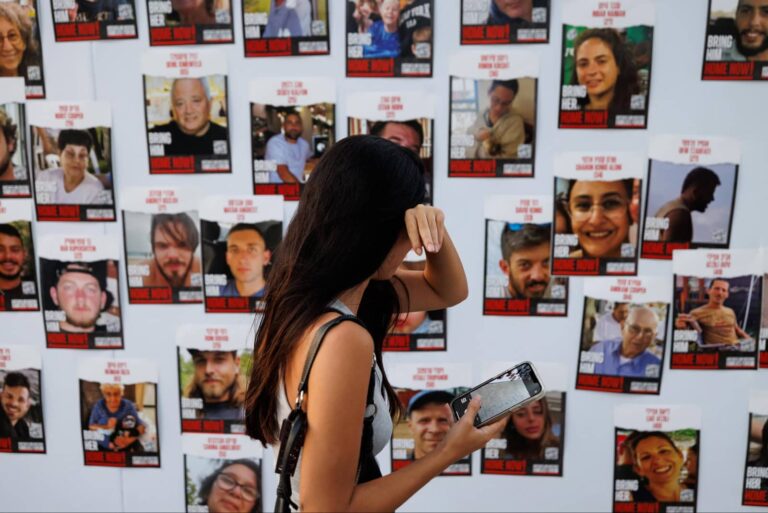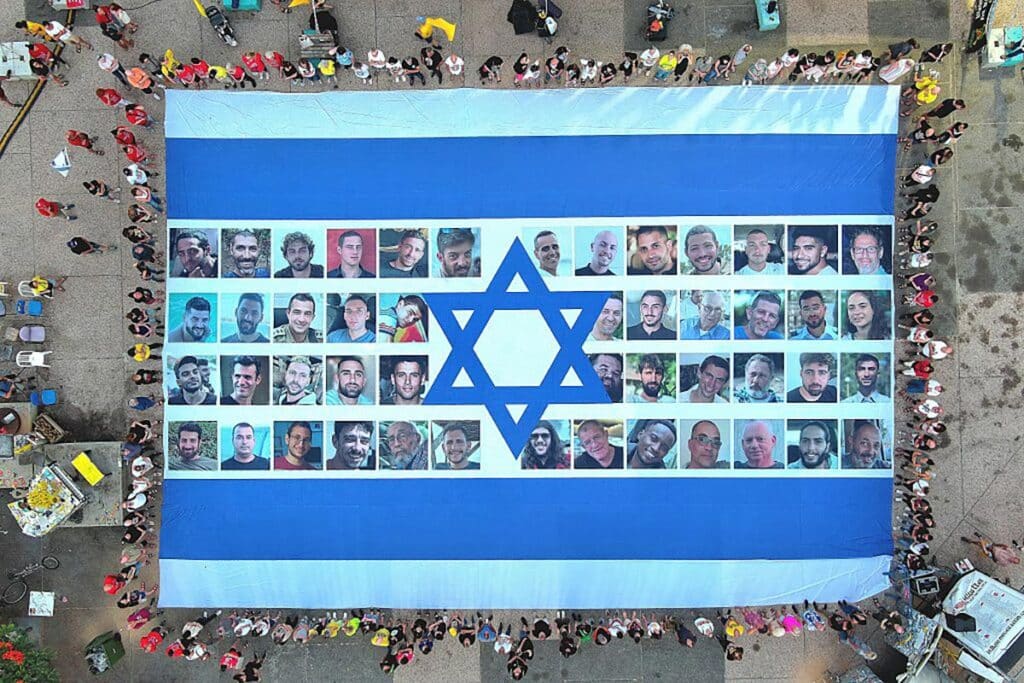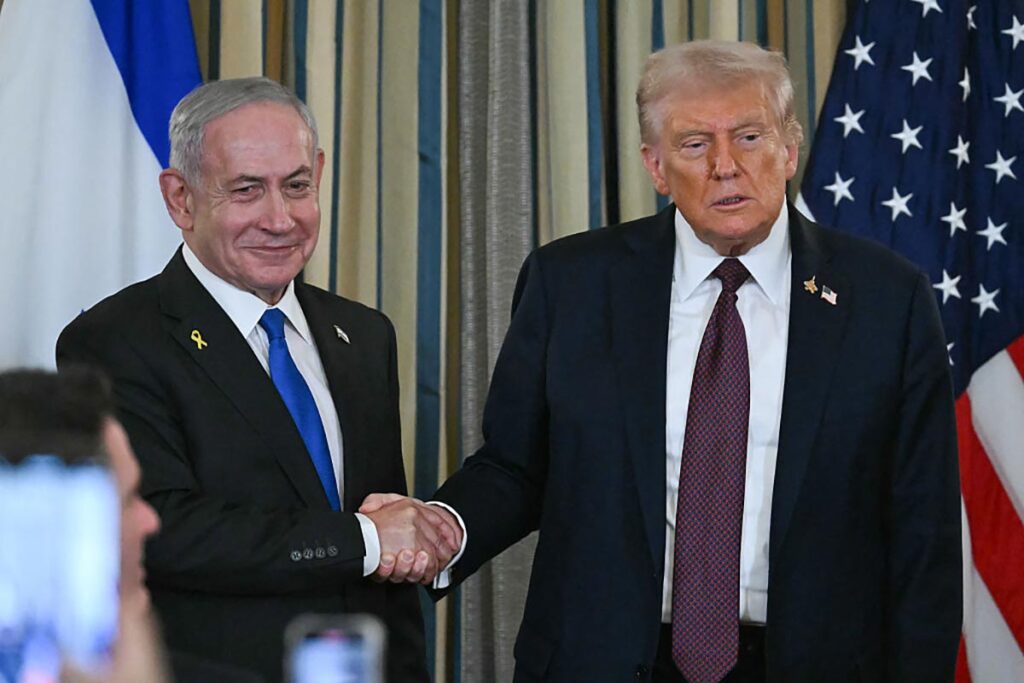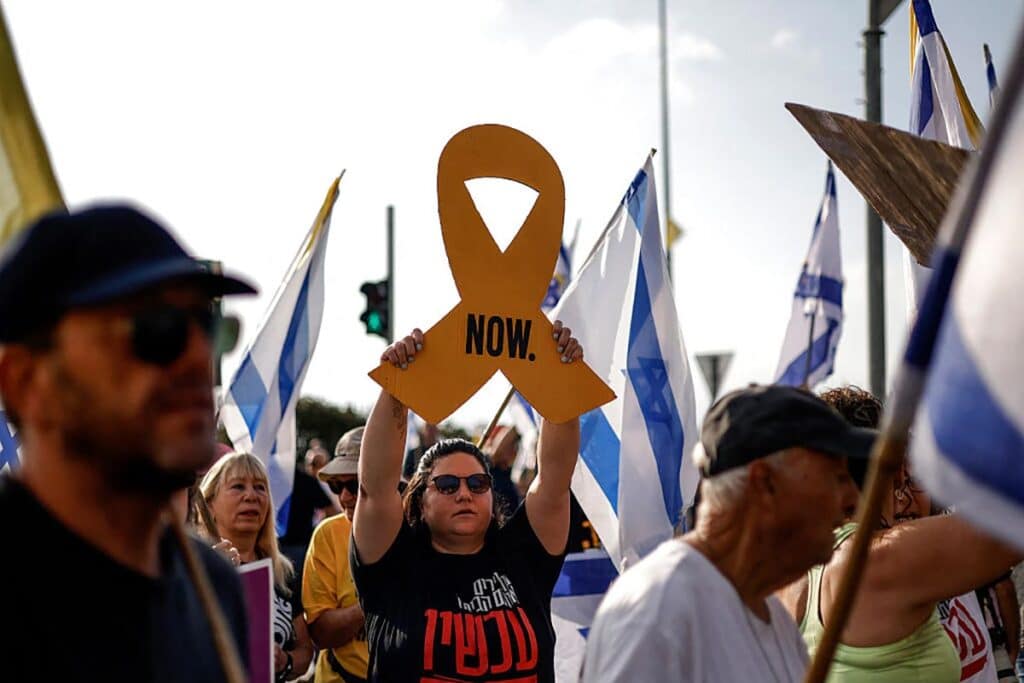
After 727 days of war between Israel and Hamas, the terrorist group announced that it had agreed to release all 48 Israeli hostages, alive or dead.
In a statement posted Friday night, Hamas said it would release the hostages “according to the exchange formula contained in President Trump’s proposal, and as the field conditions for the exchange are met.”
“In this context, the movement affirms its readiness to immediately enter into negotiations through the mediators to discuss these details,” the terrorist movement added.
🔴 Hamas' response to Trump's Gaza Peace Plan:
— Open Source Intel (@Osint613) October 3, 2025
Hamas agrees to release all Israeli prisoners (alive or deceased) per Trump’s exchange formula, pending suitable field conditions, and is prepared for immediate talks.
Hamas values Arab, Islamic, international, and Trump’s efforts… https://t.co/qA0FPp1nCU pic.twitter.com/PNQild86mr
This comes as United States President Donald Trump has increased pressure on Hamas to accept his new ceasefire deal, giving it a deadline of Sunday afternoon to accept the deal or “all hell” would “break out.”
“If this LAST CHANCE agreement is not reached, all HELL, like no one has ever seen before, will break out against Hamas,” Trump wrote Friday on Truth Social.
While it is too early to know whether this ceasefire will hold, here’s everything we know so far.
What did Hamas say about the future of Gaza?
In its statement, Hamas approved of handing “over the administration of the Gaza Strip to a Palestinian body of independents (technocrats) based on Palestinian national consensus and supported by Arab and Islamic backing.” However, whether this board is the same as the one detailed in Trump’s plan remains to be seen.
The terrorist group claimed that it was interested in being involved in future discussions about the future of Gaza, and did not appear to give its approval of the Trump plan writing that, “As for other issues included in President Trump’s proposal concerning the future of the Gaza Strip and the inalienable rights of the Palestinian people, this is tied to a collective national position and in accordance with relevant international laws and resolutions, to be discussed within a comprehensive Palestinian national framework.”
Hamas’ statement made it unclear whether it agreed to the section of the Trump plan which demanded that the terrorist group have no political control of Gaza in the future, or whether Hamas members would be considered part of the “technocrats” that it would cede power to. Without that agreement, it is unlikely that the U.S. or Israeli government would accept the deal.

Which hostages are still in Gaza?
Out of the 48 hostages still in Gaza, the Israeli government believes that 20 are still alive. Twenty-six have been confirmed dead by the Israeli military, and the status of the remaining two is unknown.
The remaining hostages are:
Ariel Cunio (27)
Alon Ohel (23)
Eitan Horn (38)
Avinatan Or (31)
Elkana Bohbot (35)
Evyatar David (24)
Bipin Joshi (24)
Ziv Berman (27)
Gali Berman (27)
David Cunio (34)
Eitan Mor (24)
Maxim Herkin (36)
Omri Miran (47)
Bar Abraham Kupershtein (23)
Guy Gilboa-Dalal (23)
Nimrod Cohen (20)
Matan Zangauker (25)
Tamir Nimrodi (20)
Matan Angrest (22)
Segev Kalfon (27)
Rom Braslavski (21)
Yosef-Haim Ohana (24)
Itay Chen (19) – U.S. Citizen
Eliyahu Margalit (75)
Eitan Levi (52)
Sahar Baruch (24)
Joshua Luito Mollel (21)
Tal Haimi (41)
Arie Zalmanowicz (85)
Ran Gvili (24)
Dror Or (48)
Tamir Adar (38)
Ronen Engel (54)
Inbar Hayman (27)
Guy Iluz (26)
Asaf Hamami (41)
Lior Rudaeff (61)
Muhammad Al-Atarash (39)
Meny Godard (73)
Omer Neutra (21) – U.S. Citizen
Yossi Sharabi (53)
Daniel Oz (19)
Daniel Perez (22)
Uriel Baruch (35)
Sontia Ok’Krasari (30)
Sontisek Rintalk (43)
Amiram Cooper (85)
Hadar Goldin (23)
What is Trump’s plan?
The 20-point proposal includes details about how the war will end and what the future of Gaza will look like.
The plan will have Gaza turned into a “deradicalized terror-free zone that does not pose a threat to its neighbors.”
If both sides approve the agreement, the war will end immediately. Israeli forces will withdraw to an agreed-upon line, and within 72 hours, all hostages will be released.
President Donald J. Trump’s Comprehensive Plan to End the Gaza Conflict:
— Rapid Response 47 (@RapidResponse47) September 29, 2025
1. Gaza will be a deradicalized terror-free zone that does not pose a threat to its neighbors.
2. Gaza will be redeveloped for the benefit of the people of Gaza, who have suffered more than enough.
3. If… pic.twitter.com/veqhr9MW28
In return, Israel will release 250 life sentence prisoners, plus 1,700 Gazans detained since October 7. For every deceased Israeli hostage released, Israel will release the remains of 15 Gazans.
Hamas members who commit to peaceful coexistence will be granted amnesty. Members of the terrorist group who wish to leave Gaza will be provided safe passage.
The flow of humanitarian aid to Gaza will increase, returning to levels that were reached under the last ceasefire agreement. The distribution of aid will be run by the United Nations, the Red Crescent, and other international institutions. The Rafah crossing will be opened under the conditions of the last ceasefire agreement.
A technocratic, apolitical Palestinian committee, including international experts, will be given temporary control of Gaza. It will be responsible for running the day-to-day public services and municipalities.
A “Board of Peace” chaired by Trump will supervise the Palestinian committee. Other officials and heads of state will take part in the Board, including former British Prime Minister Tony Blair. The Board will be in charge of handling the funding for Gaza’s reconstruction.
The proposal also requires the Palestinian Authority to carry out a sweeping reform program in accordance with a peace plan Trump presented in 2020 and with a Saudi-French declaration from July. The deal also calls for an interfaith dialogue to encourage tolerance and peaceful coexistence. Once the reform is completed, a pathway may open to establishing a Palestinian state.

The plan additionally includes economic goals for securing the economic future of Gaza, including the establishment of a special economic zone.
It also stresses that no Palestinians will be forced to leave Gaza, and any who do leave will be free to return. Palestinians will be encouraged to stay.
Hamas and the factions allied with it will have to agree to have no role in governing Gaza. The Strip will be entirely demilitarized, and all terrorist infrastructure will be destroyed. The weapons in Hamas’ possession will be handed over to independent monitors through an agreed-upon process.
The U.S. will work with Arab and international partners to develop an “International Stabilization Force” (ISF) that will secure Gaza, train Palestinian police, and prevent weapons smuggling into the Strip.
As the plan progresses, the IDF will gradually withdraw completely from Gaza, handing over control to the ISF.
If Hamas rejects the plan or delays its implementation, the plan will move forward in the areas handed over to the ISF by the IDF.
The remaining factors
Even though Hamas agreed to release the hostages, there is still an uphill battle for this ceasefire deal to truly take place.
First, the details of the plan need to be ironed out, and the devil is always in the details. Who will serve on the Palestinian committee and the international security force in Gaza? Who will determine when the Palestinian Authority has completed enough reforms to take over Gaza? If there aren’t concrete milestones, what’s to stop the Palestinians or the supervising committee from declaring the reform completed when it isn’t, or Israel from deciding the reform hasn’t gone far enough, no matter how far it goes?
There are other questions, too. How will the process of handing over control to the international force take place? If Hamas doesn’t agree to the deal and it moves forward regardless, what happens to the hostages? At what point will Hamas be considered destroyed enough in each area that Israel still controls for the international force to take over?

Both Israel and Hamas could also argue at any point that the other side isn’t upholding the agreement and decide to violate it themselves, as has happened repeatedly in the past.
Hamas also isn’t the only armed group in Gaza. If these other groups refuse to give up their arms, who takes care of them: Israel or the international force?
Past peacekeeping forces have failed because of questions like these. In Lebanon, both the U.N. and Lebanon exploited vague provisions in the mandate of the peacekeeping mission there to avoid having to actually disarm Hezbollah.
Some potential issues from Israel’s side also appeared during the press conference on Monday. Netanyahu said that Israel would retain security responsibility for the foreseeable future and that neither Hamas nor the PA would govern Gaza.
These two points could contradict the Trump plan, which stated that Israel would not retain security responsibility of the entire Strip; it would only maintain a security perimeter along the Israel-Gaza border. The plan also sets the goal of eventually bringing Gaza under the control of the PA, an aim that Netanyahu appeared to reject in his statement. The prime minister acknowledged that the deal plans for the PA taking over if it undergoes serious reforms, but stressed that “the vast majority of Israelis have no faith that the PA leopard will change its spots.”
“Instead of Hamas isolating us, we turned things around and isolated Hamas”
Netanyahu described his visit to Washington as “historic,” saying, “Instead of Hamas isolating us, we turned things around and isolated Hamas.”
“Now the entire world, including the Arab and Muslim world, is pressuring Hamas to accept the conditions that we set together with President Trump,” Netanyahu added. He reiterated that he did not agree to accept the creation of a Palestinian state.
The plan states that after all of its steps are completed, “the conditions may finally be in place for a credible pathway to Palestinian self-determination and statehood” and that the U.S. recognizes self-determination and statehood as “the aspiration of the Palestinian people.” That one word, “may,” leaves room for interpretation, as it means that self-determination and statehood aren’t necessary conditions for the plan.

